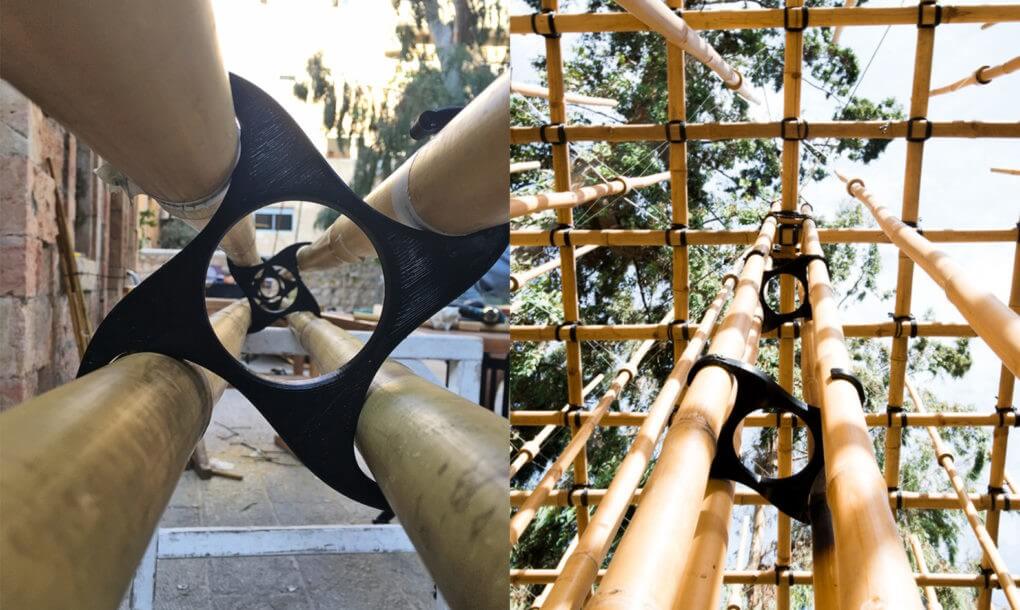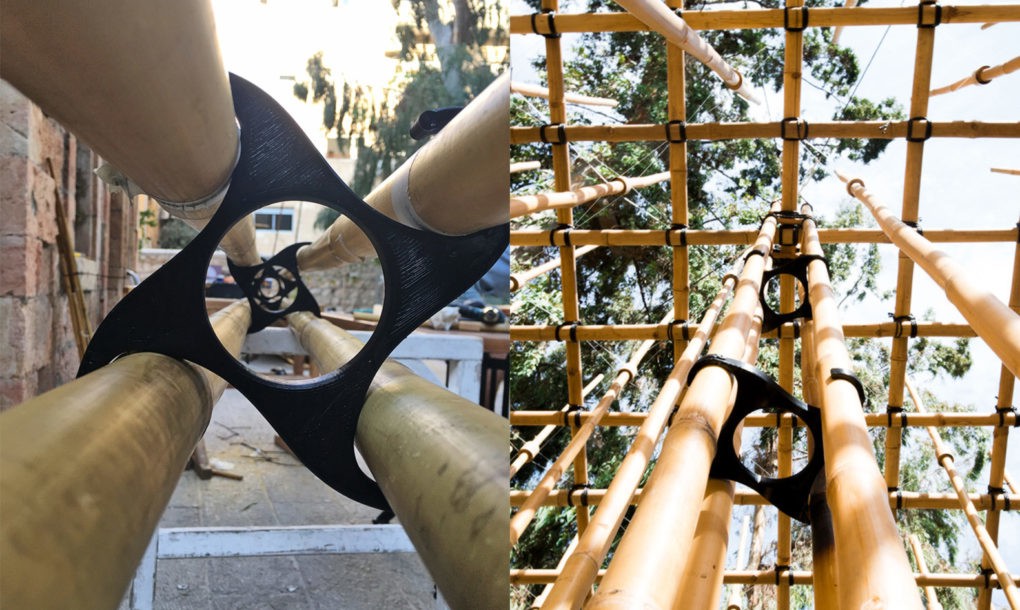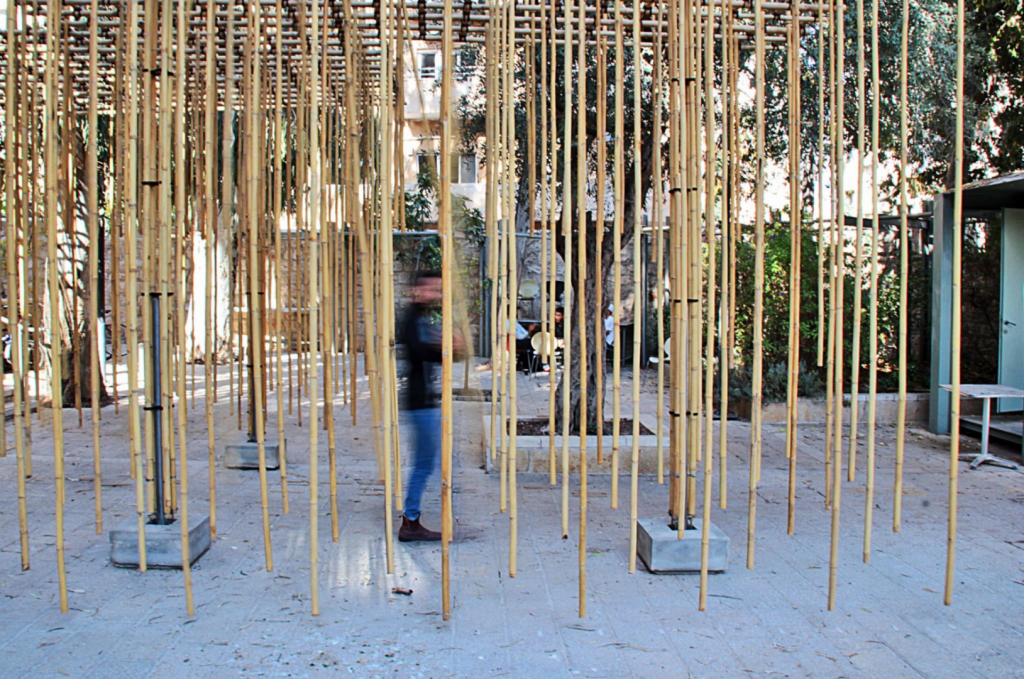Students in Jerusalem used 3D printed joints to create a unique, suspended bamboo pavilion at the Bezalel Academy of Arts and Design.
Thanks to their students’ innovative design, Bezalel’s Architecture Department has a new hanging pavilion at the entrance. It’s made of ropes, natural bamboo reed, and various 3D printed joint shapes.
They created this 430 square feet (40 sq. meters) structure as part of a Design-Build summer studio project.
“The Bamboo Pavilion welcomes visitors, students, and faculty with an inspiring play of shadows and lights, and invites them to engage with the hanging bamboos while challenges their perception of being ‘inside’ and ‘outside,’” the architecture students explain.
So, how did they make it? Students used 3D computer modeling to generate different suspension patterns. Next, they attached them to a hanging bamboo grid.
They attached the bamboo using the 3D printed joints, which are shaped kind of like ‘shuriken,’ or Japanese throwing stars. Or, if you’re not into ninja movies, just imagine the now famous ‘fidget spinners.’
Due to the flexibility of 3D printing, the students can change the prototypes at any time. This is also in part due to the non-permanent nature of the structure. So, their suspended bamboo pavilion can be constantly adapted.
Their unique concept invites visitors to stand within the suspended bamboo reeds and feel neither inside nor outside the pavilion.
About the Design-Build summer projects
Design-Build projects are known throughout the world for their ‘green design ideas, innovations and inspiration to build a cleaner, brighter, and better future.’
Every year, they also vote on the Best Design-Build Projects, which enjoy widespread international support and recognition.
Of course, these international efforts certainly yield very interesting and useful creations.
For example, one American student built a modern cabin for his father made entirely from recycled materials. Another group from France discovered a way to use banana peels to detect skin cancer.
While this project certainly isn’t detecting cancer or providing eco-friendly homes, it’s unique use of 3D printing has created a beautifully artistic entrance to this popular design school in Jerusalem.
Source: Inhabitat
Website: LINK



Schreibe einen Kommentar
Du musst angemeldet sein, um einen Kommentar abzugeben.